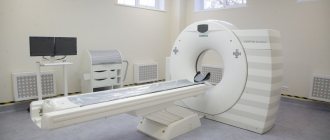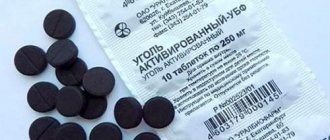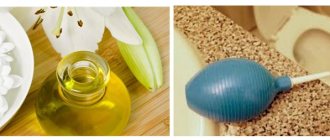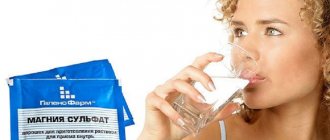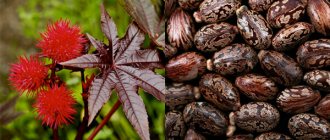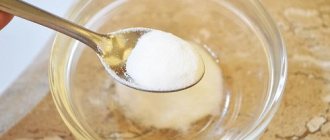The condition of the small and large intestines depends on the normal functioning of all organs. If various harmful substances accumulate in it, the functioning of the entire digestive tract is disrupted. You can rid your intestines of waste and toxins at home. To do this, it is allowed to use the method that is practiced in yoga by everyone who adheres to a healthy lifestyle. In order for the technique to be extremely beneficial, you must adhere to several rules, learn to perform special exercises and know the contraindications for bowel cleansing procedures with salt water.
- Squatting
- Shank-prakshalana
General information
The intestines are a very important organ, the health of which determines the normal state of the body as a whole. After all, it not only digests food and removes its remains, but also determines immune functions. Consequently, if its functions are disrupted, the body as a whole suffers. Weakness, pain, deterioration in performance - all this has a very bad effect on overall vitality. Therefore, it is very important to take preventive measures to ensure the coordinated functioning of this body. We are talking, first of all, about cleansing the intestines of slagging, toxins and other consequences of junk food, poor environmental conditions, and poor lifestyle.
One of the methods of such cleansing that can be practiced at home is colon cleansing with salt water. Humanity has known this procedure since ancient times. There is evidence that it was used by Indian yogis. In those days it was called Shankha Prakshalana. This combination translates as “shell gesture.” The thing is that cleansing with water and salt leads to a process similar to washing a clam shell. Water is pushed out by muscle effort. The big advantage of this procedure is that it can be done at home, and only requires salt water and some exercises. But the simplicity of this method does not mean that it can be used by everyone. It is very important to consult a doctor before using it. How exactly to carry out salt cleansing, and what exercises you need to do for successful cleansing, will be discussed in this article.
Side effects
When cleansing the intestinal tract with salt water, not only fecal deposits are removed from the walls, but also a protective mucous layer. Due to the large amount of salt, gastrointestinal discomfort may be felt. Negative consequences that occur during and after bowel cleansing with saline solution:
- nausea or vomiting can be easily removed by adding lemon juice to the water;
- dysbacteriosis due to the washing away of beneficial microflora - is completely restored within a week, this process can be accelerated by taking probiotics;
- dehydration due to taking large amounts of water with salt - goes away as fluid is replenished;
- burning during bowel movements occurs because salt has a drying property; lubricating the anus with vegetable oil will help;
- Fatigue and headache occur due to the fact that the body was temporarily deprived of nutrients; after eating, the unpleasant sensations completely disappear.
Why is cleansing necessary?
Before carrying out any procedure to cleanse the body, you need to understand why it is needed and what results can be obtained after its completion. First of all, cleansing helps eliminate harmful substances from the intestines that provoke the development of serious diseases. Cleansing helps restore normal microflora and improve immunity .
You should consider carrying out such a procedure in the following cases:
- with constant apathy, fatigue, drowsiness ;
- in case of plaque on the tongue and teeth, bad breath;
- with a feeling of heaviness in the lower abdomen, constant bloating;
- with frequent constipation , headaches;
- in case of constant appearance of acne or rash on the skin.
Cleaning should be carried out by those people who exhibit several of the listed signs at once. In addition, periodic preventive cleansing is recommended for those who do not lead a very healthy lifestyle, eat poorly, or have bad habits. That is, everyone who cares about their health should periodically carry out such a procedure.
Indications and contraindications
You can use the method of colon cleansing with saline solution if you have the following disorders:
- cholelithiasis;
- allergy;
- intense hair loss;
- chronic pathologies;
- skin diseases (acne, pimples, boils, early wrinkles, etc.);
- vitamin deficiency;
- vascular pathologies (heart attack, thrombophlebitis, stroke);
- depression;
- frequent constipation;
- radiculitis;
- increased frequency of migraine attacks;
- physical weakness;
- bloating and rumbling after eating;
- frequent colds.
Contraindications
The procedure using salt water has a number of contraindications. Cleansing the intestines using this method cannot be done during pregnancy or after appendicitis surgery. Other restrictions include:
- stool disorder;
- kidney pathology;
- stomach ulcer;
- oncology;
- gluten enteropathy;
- colitis.
Why is salt water needed?
Many who become familiar with this cleaning method, reading about it and watching the corresponding video, have a question about why salt water is needed? This need is related to the physiology of the body. After all, its cells contain water of a certain salinity. The prepared solution with salt is “isotonic”, that is, it contains approximately the same amount of salt as the body’s cells. That is why the salt solution actively passes through the digestive tract and is not absorbed; it also effectively rinses it.
Nasal rinsing in children
It is unlikely that children under three years old will be able to explain the technique of the procedure. To clean your baby's nose, you need to place his head on your lap with his nose facing up. Using a pipette, take a few drops of the solution and inject it into each nostril in turn. After 20 - 30 seconds, use a special aspirator to remove the mucus with the remaining washing liquid. The baby should not be left alone during the procedure - you need to make sure that the baby does not choke.
For older children, the procedure can be performed in a sitting, lying or standing position, focusing on the child’s wishes. If during the procedure, the baby complains of tingling in the nose, then the salt concentration is slightly higher than optimal (the mucous membranes of children are more sensitive and receptive). In this case, you need to dilute a new solution with less salt or dilute the existing one with water.
The essence of the cleansing technique
People who used this technique noted that after they consumed salt water during bowel movements, particles of food consumed relatively long ago came out. The thing is that when food moves from the stomach to the intestines, it passes through many obstacles. Food particles get stuck in membranes and valves. With the help of the exercises that this technique involves, these valves can be relaxed. As a result, water penetrates the intestines, washing it and softening the feces.
This cleansing should be done 3-4 times a year. It is best to do this during the off-season periods - autumn and spring.
Basic recipes for salt cleansing
Before starting treatment, you must select the salt itself. Regular table salt is a simple and affordable method, but it is preferable to use Himalayan pink, Epsom, French, hyaluronic or classic sea salt without dyes or additives. All these types of salts have a gentler effect on the body and help restore electrolyte balance in the blood plasma. The following effective recipes are used as cleansing procedures.
Article on the topic: How activated carbon works: beneficial properties of the adsorbent
Salt with lemon juice
Salt with lemon not only cleanses the intestines, but also saturates the body with valuable vitamins. 1 lemon meets your daily requirement of vitamin C
The salt and lemon based recipe involves cleansing in the form of enemas or oral administration. To prepare the solution inside, you will need 1 liter of boiled warm water, 1 medium lemon, sea or Epsom salt (if you don’t have it, you can use regular table iodized salt). The solution is drunk in the morning on an empty stomach in small portions. Before noon you should drink 1 liter, after which prepare 2 liters of the composition for the evening.
After each glass of salt water with lemon, you should do kneading exercises: bending over, light jumping, and rotating the body. You should save lunch, afternoon snack and dinner, including only fresh vegetable salad with oil dressing without salt.
The enema method is known for its high therapeutic results. To prepare the solution, add the juice of 1 lemon, strained through cheesecloth, and 2 tbsp to 2 liters of boiled water. spoons of salt. All components must be thoroughly mixed to eliminate any undissolved particles.
Important! Normally, the finished composition must be filtered again through fine gauze or a sieve. An enema is suitable only for those who are confident in the technique and have a certain skill.
French salt cleansing
French sea salt is considered a popular sea salt. It is mined from the west coast of France. Considered the best in the world. There are two main types of French salt - crystalline white Fleur de Sel with a fresh sea aroma and moist, unrefined Sel Gris, which contains ocean microalgae. Gray salt is more expensive because the extraction technique is still reminiscent of traditional Celtic methods using wooden tools and drying in natural conditions.
To cleanse with sea salt, just dissolve 2 tbsp. spoons in 1 liter of boiled warm water and drink 1 glass per day. The total volume per day is 2 liters. The course of cleansing is 7 days. At the end of the course, you can simply add salt to your food. Thanks to its enriched composition and high concentrations of antioxidants, salt removes toxins well, softens stool, and eliminates water-electrolyte imbalance.
Sea salt cleansing
Sea salt contains high concentrations of vitamins, minerals and other beneficial substances necessary for the normal functioning of the intestines. During the procedure, you should adhere to a plant-based diet and it is better to cleanse on weekends.
Cleansing begins in the morning on an empty stomach. To prepare 1 liter of concentrate, 2 tbsp is required. spoons of salt and 1 liter of boiled clean water. It is recommended to drink the entire volume before lunch, and in the intervals between drinks you should do light warm-up exercises aimed at the abdominal organs.
The total daily volume should not exceed 12 glasses of solution. It is important to use sea salt without dyes or other impurities. Instead of usually warm water, you can use a decoction of chamomile, calendula or string.
Cleansing with hyaluronic salt
Sodium hyaluronate is a derivative of hyaluronic acid. According to official data, hyaluronic salt is many times superior to the quality characteristics of the acid itself.
Hyaluronic salt or sodium hyaluronate has a positive effect not only on the skin. The beneficial effect is reflected in the condition of internal organs, systems, and deep subcutaneous structures. Against the background of cleansing, the following effects are achieved:
- intensive hydration and increased cell regenerative abilities;
- increasing the secretion of your own hyaluron:
- slowing down the aging process;
- smoothing out the very first wrinkles, correcting the first age-related changes;
- saturating the skin with nutrients.
Hyaluronic acid contains 2 types of salt: potassium hyaluronate and sodium hyaluronate. Salt is obtained in laboratory conditions by removing it from lipid acid molecules, nucleic acids and protein compounds. The result is a smaller molecule, but with greater functionality.
Note! To cleanse, you need to dissolve 2 tbsp. spoons of salt in 1 liter of water and drink in the morning on an empty stomach. The total daily volume should not exceed more than 2 liters.
How to prepare for cleaning?
Before you begin the cleansing procedure itself, you need to prepare for it for at least a week. We are talking about the following rules:
- Fatty foods, as well as too salty and spicy foods should be excluded from the diet. It is advisable not to eat meat for a week.
- Every day you need to take a warm bath to warm up the body before starting cleansing procedures.
- Mornings during this week should begin with fresh juices, both fruit and vegetable. You can also drink tea with lemon and honey.
First meal
After shank prakshalana, you need to follow some recommendations. Eat no earlier than half an hour and no later than an hour after the procedure. It is forbidden to leave the digestive tract hungry for more than an hour!
What should your first meal consist of? Cleaned rice boiled in water, but not overcooked (the grains should melt in your mouth). You can add slightly salted tomato juice to the rice; you should not use pepper and various hot seasonings. You can add well-cooked lentils or carrots to rice. Along with rice you need to eat 40 grams of butter. The butter can be melted in the rice, but it is better to do it separately, in a water bath, or eat it from a spoon without melting. Instead of rice, you can use boiled wheat, oats or flour products (pasta, noodles, spaghetti, etc.) seasoning them with grated cheese.
Attention! Rice should not be cooked in milk. Also, over the next 24 hours, you should not drink milk or kefir, and sour foods and drinks, fruits and raw vegetables are also contraindicated. Bread can be eaten during the second meal. Any hard or semi-hard cheeses are not prohibited. It is not recommended to eat white and fermented cheese (brie, camembert).
After 24 hours, you can go back to your normal diet, limiting only your meat consumption.
Who is this procedure not recommended for?
Cleansing using salt should not be carried out in the following cases:
- Women should not do this during menstruation. Also, pregnant and nursing mothers should not do this.
- People with gastrointestinal diseases should not perform cleansing; it is strictly forbidden to do this during an exacerbation of such diseases. We are talking, first of all, about gastritis , colitis , peptic ulcers, hemorrhoids , pancreatitis , etc.
- Do not cleanse the intestines during colds, because at this time the immune system deteriorates.
- People suffering from heart and vascular diseases should not undergo this procedure.
- If a person has practiced fasting, then the intestines should be cleansed no earlier than a month after the course of fasting.
- At elevated temperatures, regardless of the reason, cleaning is also not carried out.
How to proceed so that the cleansing takes place correctly?
Initially, you need to prepare a drink with salt for cleansing. To do this, dilute one tablespoon of sea salt in one liter of water. Other types of salt are also quite suitable for cleaning - iodized, Himalayan, Hawaiian, ocean. You need to take warm water.
Next, the algorithm of actions should be as follows: drink one glass of water - do exercises - drink a glass of water again - do exercises. You need to do this until six glasses of water are drunk.
The procedure is carried out in the morning, on an empty stomach, immediately after waking up. At this time, it is necessary to provide free access to the toilet for several hours, since during this time it will be needed constantly. After visiting the toilet, it is not recommended to use paper - it is better to wash with clean water. Also, do not exercise on the day of cleaning.
Exercises
The exercises below help actively move fluid through the digestive tract. Between water intakes you need to perform the following complex:
- 1. Starting position – feet shoulder-width apart. Make a “lock” with your hands and raise them above your head, palms up. Slowly bend to the right and left. Perform 8 bends in each direction. This exercise will help the saline solution to flow more actively from the stomach into the intestines.
- 2. Place your left hand to your chest, and extend your right hand in front of you. Rotate your upper body while moving your right arm to the side. Switching hands, perform similar movements. You need to perform 8 turns in each direction.
- 3. Lie on your stomach, lean on your elbows and spread your legs so that there is about 40 cm between your heels. Hold your breath, lean on your palms and turn to the right. Look at your heel and take the starting position. You should turn 8 times in each direction.
- 4. Squat down, placing your legs so that your feet are 30 cm apart. From this position, one knee should be placed on the floor, keeping your hands on your knees. Lean your body forward, use your hand to push your right leg towards your left leg, which is on the floor. You need to gently press your right foot on your stomach. Yoga provides just such a technique for performing the exercise. You need to do this 8 times in each direction. This exercise will promote the flow of fluid from the small intestine to the large intestine.
Exercises must be performed quickly, without pauses between them.
After all six stages have been completed - that is, six glasses of salt water have been drunk and six sets of exercises have been done - the urge to go to the toilet should appear. If such a feeling does not appear, you need to repeat the entire cycle of exercises again, but do not drink water. After a repeat cycle, I almost always want to go to the toilet. But if this does not happen, you need to do an enema with plain water.
When a bowel movement has occurred, the cycle of six glasses of salt water and exercise must be repeated again. According to the rules of cleansing, you need to drink water until it becomes clear that only liquid comes out during bowel movements.
After completing the cleaning process, you need to drink three glasses of clean water without salt. Next, it is recommended to induce vomiting so that the cleansing is complete. In general, it is not recommended to drink more than 14 glasses of water with salt per day. With a higher dose, there is a risk of injury to the digestive system.
To improve the cleaning result, add lemon juice to salt water. Squeeze the juice of one lemon into a liter jar of salted water.
The diet on the day of the cleansing is also important. Since it is recommended to cleanse in the first half of the day, the first meal will be in the second half. You can eat after cleansing within an hour after the entire cycle is completed. The first dish after cleansing should be rice with butter, durum pasta or oatmeal. The very next day the diet may be more varied. However, you still cannot eat meat, dairy products, fruits and vegetables, and dairy products on the second day. Alcohol is also prohibited on this day. But within a day you can eat as usual.
Carrying out the procedure
There are several methods that effectively cleanse the intestines of accumulations and allow you to normalize the functioning of the entire body.
Cleaning using any of the options should be done no more than once every 3 months, provided there are no contraindications or side effects. In some cases, it is allowed to repeat it once every 2 weeks for 2 months. This is done in case of severe intestinal contamination and with the permission of a specialist.
Any of the cleansing recipes requires prior consultation with your doctor and examination to identify chronic pathologies of the digestive tract or their absence.
Shank-prakshalana
The standard yogic method, or shank-prakshalana, involves taking a classic saline solution or a solution with soda to achieve maximum results. Cleaning consists of several stages, the time of which depends on the degree of intestinal contamination:
- Prepare a solution with soda or according to the classic recipe in an amount of 3 liters.
- Divide the product into 6 equal portions.
- Use each according to instructions.
Cleansing should begin in the morning on an empty stomach. You need to drink the first serving and perform special exercises until you want to empty your bowels. After this, repeat taking the solution and performing the exercises. This must be done 6 times in a row until clean water begins to come out instead of feces.
Breakfast is allowed no earlier than 30 minutes after the last bowel movement. In order to prevent irritation of the anus, it is allowed to lubricate it with Vaseline or baby cream.
Enema
If, even after drinking the 6th glass of solution, emptying does not occur, it is allowed to do a cleansing enema using plain water in an amount of 2 liters:
- Take Esmarch's mug purchased at the pharmacy.
- Pour water into it.
- Lubricate the tip with glycerin or petroleum jelly.
- Take a lying position on your side with your legs pulled up to your chest and your knees bent.
- A lubricated tip is inserted into the rectum, and all the liquid enters the large intestine.
It is recommended to hold the entire volume for at least 5 minutes so that the water separates the feces from the intestinal wall and brings them out. After this, the urge to empty will appear.
With this type of cleansing, only the large intestine is freed from waste and toxins. For this reason, the first method is preferable.
According to Malakhov
A well-known folk healer offers cleansing the body through an enema, but this does not use ordinary water, but a prepared solution with lemon. For 2 liters of liquid you will need the juice of 1 lemon and 30 g of salt. Necessary:
- Pour the prepared solution into Esmarch's mug.
- Lubricate the tip.
- Insert into the anus and wait for the mug to be completely released.
- Hold the liquid for at least 3 and no more than 7 minutes.
After bowel movements, it is not recommended to eat anything until the morning, so the session should be performed in the evening. It is allowed to repeat no more than 3 times over 3 days. Longer use will lead to disruption of the intestinal microflora and irritation of the mucous membrane.
Important Tips
The most important advice in this case is this: those who want to do such a cleansing should first visit a doctor and consult with him about the advisability of such a procedure. Despite the fact that a person can independently determine its necessity based on the signs, it is still better to hear the advice of a qualified specialist.
It is imperative to take into account all the contraindications listed above and not carry out the procedure if they exist.
You need to carry out cleansing on a day completely free from any business and the need to go somewhere.
How to rinse your nose correctly?
Many people are hesitant to try the procedure on themselves, mistakenly believing that this manipulation is very complicated. At first, it may not be entirely comfortable, but after several sessions, you will get used to it and will cope with it with ease.
There are several ways to rinse the nasal cavity. Let's look at the most common ones:
- The easiest way is using an ordinary pipette: you need to take a few drops of the solution into the pipette and drop it into each nasal passage one by one, tilting your head back. Hold your head like this for a few seconds, then blow out the contents of your nose. This manipulation must be repeated several times. You will immediately feel how much easier it is to breathe.
- Another method involves using a small kettle as a rinsing device. Pour the solution into the kettle and tilt your head to the side, place the spout of the kettle in your nostril and carefully pour the liquid into it. According to the principle of communicating vessels, liquid will flow out of the second nostril. Then repeat the same procedure, but on the other side. During the procedure you need to breathe through your mouth. If you don’t have a suitable kettle at hand, you can use a syringe or syringe without a needle.
- Another well-known method is to pour the washing liquid into a saucer and draw it in with your nose, but do not swallow. Spit out the liquid and repeat the procedure.
What problems can occur when cleaning with salt?
- Sometimes, after a course of saline consumption and exercise has been completed, bowel movements do not occur due to the formation of a gas plug. In such a situation, abdominal massage can help. To do this, you need to lie on your back, put a little pressure on your stomach and massage it. If there is no result, you need to lie on your back, place your arms along your body and throw your legs behind your head. You should lie in this position for about a minute.
- If after drinking several glasses of water you feel heaviness in the stomach and nausea, this indicates poor passage of fluid into the intestines. To activate this process, you need to stop drinking the saline solution and do the exercises three times in a row. When the nausea passes, you can continue drinking liquid with salt.
- If the fluid does not pass further, it is necessary to induce vomiting and stop the cleansing process. You can tolerate nausea without vomiting.
- Since bowel movements with salt can irritate the anus, after each bowel movement you need to wash yourself with water and lubricate the anus with Vaseline or vegetable oil.
Preparation of the solution
There are several options for preparing a cleaning solution. Each has its own advantages. There are no strict indications for the use of one or another recipe, so you are allowed to choose on your own.
The following cleaning composition options are considered the most popular.
Classical
This recipe does not require the use of any additional components:
- Take 3 liters of water preheated to a temperature of +40 degrees.
- Add salt to it at the rate of 15 g per liter.
- In severe cases of contamination, the amount of salt per liter may be increased by 5 g.
- Wait until completely dissolved.
Consume the prepared drink. Instead of table salt, you can use sea salt. It is not recommended to use iodized one. You should not greatly reduce the amount of salt, since a weak concentration in water will not bring the desired result and will harm the kidneys.
With lemon
This recipe is suitable for those who cannot take a pure saline solution and gag when trying to drink it:
- Take 3 liters of water preheated to +40 degrees.
- Add 45-50 g of salt.
- Squeeze the juice of 1 lemon.
- Mix the composition thoroughly.
Use as directed. This recipe should not be used by patients with high acidity of gastric juice and gastritis, so as not to provoke complications.
With soda
The combination of salt and soda allows you not only to cleanse the intestines, but also to normalize the acid-base balance in the body:
- Prepare 3 liters of preheated water (+40 degrees).
- Add at least 50 g of table salt and 1 tbsp. l. baking soda.
- Mix thoroughly until dissolved.
Take the resulting liquid. The recipe is not suitable for patients who suffer from an allergy to sodium bicarbonate or gastritis with low acidity of gastric juice.
Colon cleansing with salt water: reviews and results
Numerous reviews of colon cleansing with salt water indicate that the procedure not only makes you feel much better, rejuvenates the body and significantly improves the condition of the skin, but can also be the first step towards losing weight. Salt cleansing is recommended for those who want to lose weight once a month. However, you should not assume that this procedure is used directly for weight loss. This is only an auxiliary method, since cleansing allows you to improve metabolic processes in the body and, accordingly, helps you lose weight more actively.
There are also reviews that such a procedure is difficult to understand. In particular, some people find it difficult to tolerate the discomfort that comes with drinking salt water. Some of them talk about unpleasant nausea that occurs during the process. Weakness, lethargy, and fatigue were also noted.
But most reviews talk about positive results, which were expressed in the appearance of lightness and freshness, and weight loss. However, given all the pros and cons, it is still advisable to consult a doctor before starting such a cleanse.
Warning
When deciding to cleanse the intestines with salt water, you need to understand that it refers to alternative medicine. The first method came to us from Indian yoga (shank prakshalana), the second is promoted by Gennady Malakhov, who is known for his controversial treatment methods. There are two conclusions to be drawn from this.
Firstly, you will be solely responsible for everything that happens to you during and after the procedure. Not a single doctor will advise you to try this method of cleansing the body in practice. You need to understand how dangerous this is due to side effects and complications if dosages are violated, contraindications are not followed, etc.
Secondly, no one guarantees the effectiveness of such cleansing. Moreover, official medicine subjects him to severe criticism. According to it, the contents of the intestine are renewed every 4 days, so it simply does not contain those deposits of toxic food residues that this procedure promises to rid us of. And it’s unlikely that all this garbage will add 2-3 kg - so such a significant weight loss is also in question.
